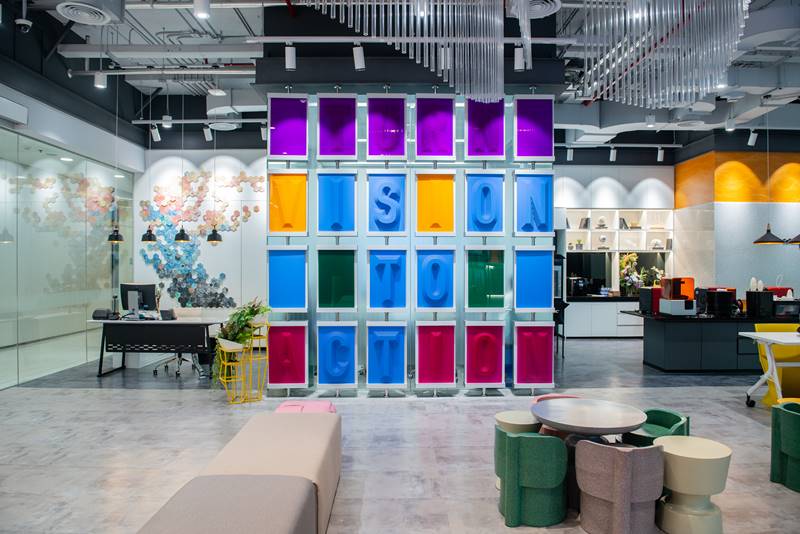Feature Stories
Pure Gold – Upcycled! Upgraded! Turn Waste to Gold
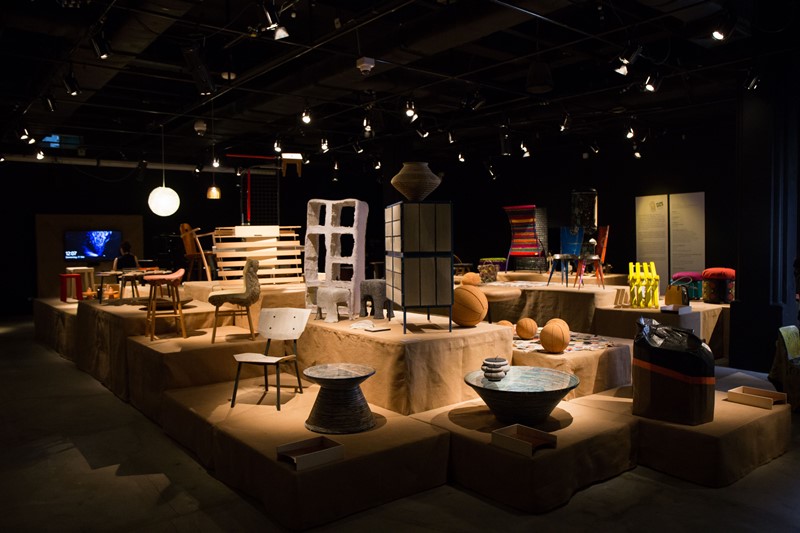
The “Pure Gold – Upcycled! Upgraded! Turn Waste to Gold” exhibition is taking place in partnership with the Thailand Creative and Design Center (TCDC), PTT Global Chemical Public Company Limited (GC), and Germany’s IfA (Institut für Auslandsbeziehungen, or the Institute of Foreign Cultural Relations). The three parties have joined together to raise awareness of waste management through sustainable design and production using an “upcycling” approach that involves reusing raw materials to create new value-added products. The exhibition was first held in Hamburg, Germany, with Bangkok as the second stop on what will be a 10-year world tour.
The exhibition demonstrates the diverse and exceptional visions of internationally-acclaimed designers in bringing waste to life. All the designers are sharing their inspirations, focusing on how waste can create value through design and creativity to become value-added products such as furniture, toys, and appliances designed with functionality and aesthetics – an approach that turns waste into gold.
The event highlights 76 selected works by 53 designers from Europe, Africa, and Asia. This includes the following seven designers who took diverse approaches to use a variety of raw materials and designs to define their identity and showcase their design skills. We are pleased to share a sample of their outstanding work below.
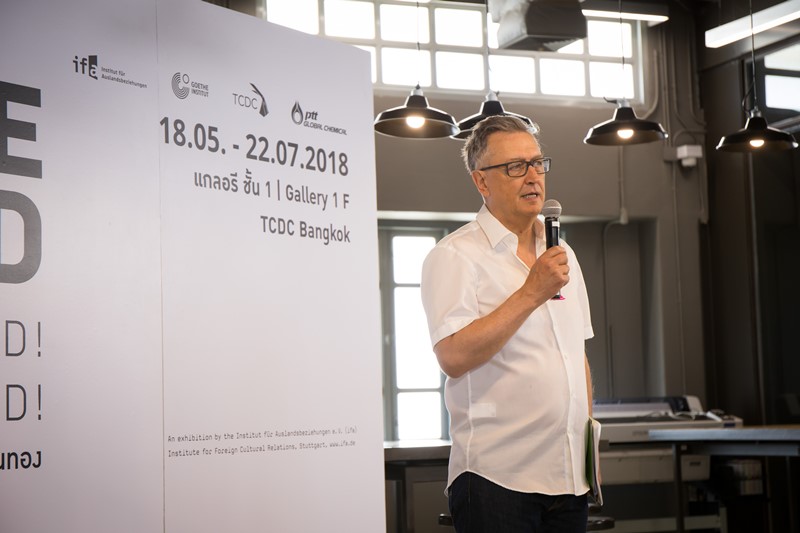
“All of the designs were produced through an unprecedented effort. In the past, recycling was only an approach to increase awareness of the importance of ecosystems and raise environmental awareness. These designs provide the public with an entirely new approach to upcycling, in which designers incorporate aesthetics into creating beautiful designs, as they can see the hidden beauty in an assortment of waste and unwanted products.”
Volker Albus – Curator of the “Pure Gold – Upcycled! Upgraded! Turn Waste to Gold” exhibition
Forrest Gump
Waltraud Münzhuber
Germany
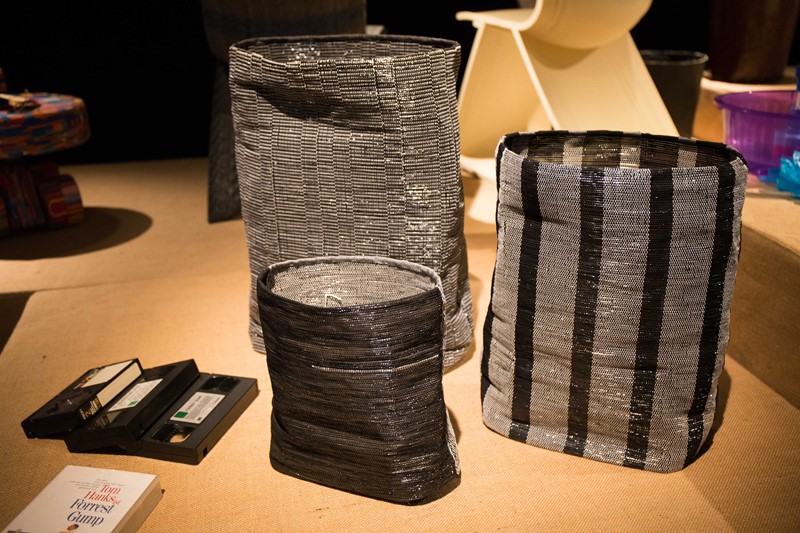
The movie and music industries were dominated by VHS and cassette tapes before the arrival of CDs, DVDs and Blu-ray discs, which were, in turn, replaced by more advanced digital storage devices and systems. These days, music is streamed online, eliminating the need for any kind of legacy product, although interestingly, vinyl has made a bit of a comeback.
German designer Waltraud Munzhuber weaved together over a hundred meter-long strips of VHS tape into durable yet delicate bags with textile-like density and a glamorous shiny silver tone. Adding a gimmick to the design, she chose magnetic tape salvaged from an old videocassette of the movie “Forrest Gump,” which can now easily be viewed online. Instead of letting the video cassette tape sit around collecting dust, this approach turns a nostalgic item into a worthwhile new and usable product.
www/www: we want wind / we want water
Volker Albus
Germany
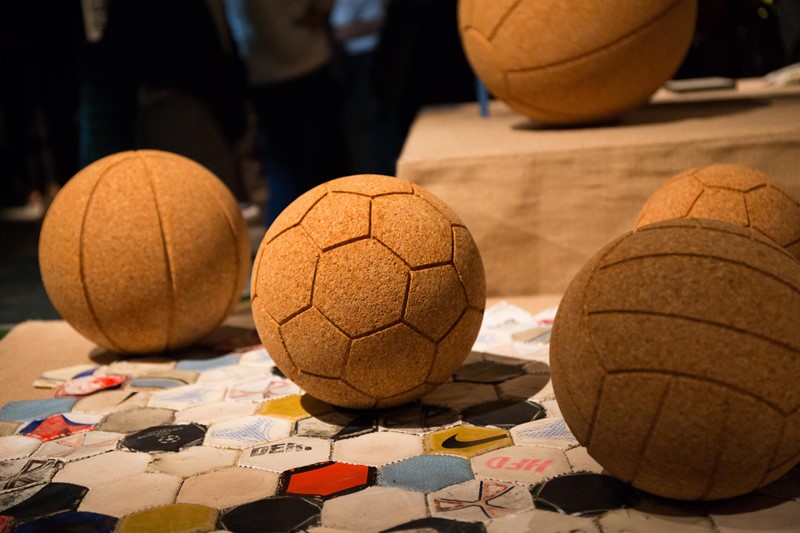
It’s widely known that cork is taken from the outer bark of the cork oak tree through a process that does no harm or damage, making this a way to use a natural resource without resorting to deforestation. Cork is lightweight, fire resistant, compressible, recoverable, and expandable, which is why it is used for bottling as it can maintain the quality of products such as wine for over a hundred years.
The unrivalled characteristics of cork prompted Volker Albus, the designer and curator of this exhibit, to select pieces of cork that were pressed into blocks with synthetic resins. They were then cut into desired shapes and formed as a football, basketball, rugby ball, and volleyball.
Steel Bar Combination Stool
Cheng Biliang
China
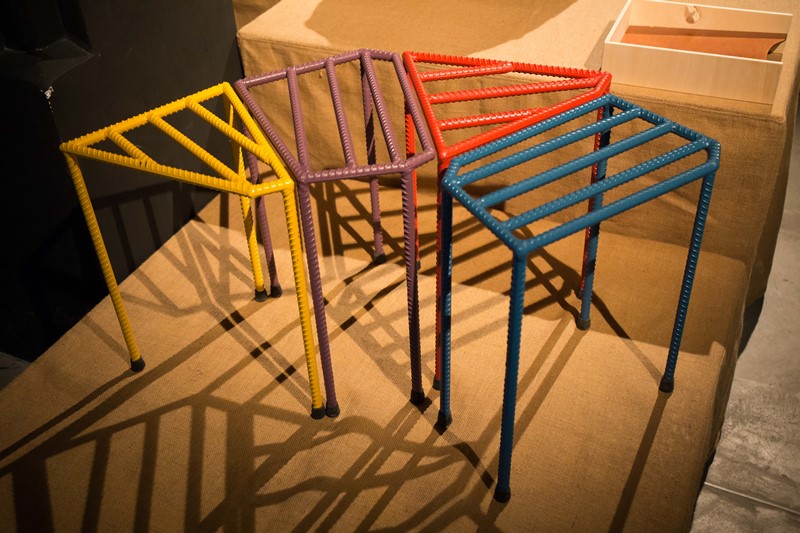
Unlike waste, scrap metal is durable, easily re-melted, and can be re-refined for reuse – properties that make this material fully recyclable. Consequently, scrap metal buyers can make a living through the recycling process.
However, some scrap metal is still left over after being used to form reinforced concrete columns at construction sites. This Chinese designer took some discarded pieces of concrete reinforcing bar and redesigned them, using a welding and cutting process to produce a set of four geometric-shaped stools in vibrant colors that would be unique and striking fixtures in any home or office.
Knit-Knacks
Junk Munkez
Lebanon
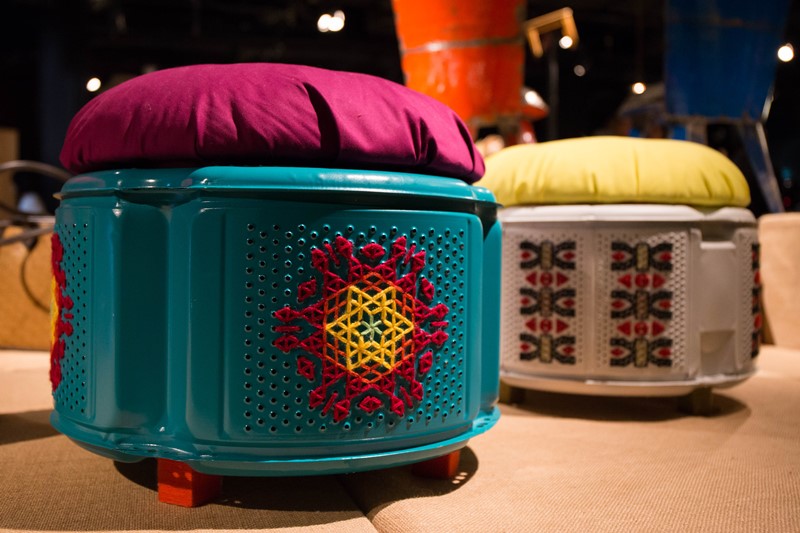
Technology is constantly evolving, which eventually makes many home appliances obsolete. Increasing consumer purchases have, in turn, greatly increased the volume of waste from home appliances, most of which is hazardous to the environment. In response, the European Union (EU) passed legislation regarding the management of e-waste that shifts responsibility to European manufacturers before they can begin production.
Some components not considered e-waste can be upcycled. For example, stainless steel rotating drums from washing machines are the perfect component in the eyes of this Lebanese designer, who redesigned them into “Knit-Knack” stools with yarn fed through the perforations in attractive Arabic geometric patterns and a comfy cushion on top, reflecting Middle Eastern artistry and comfort.
Horse Hair Collection
Jarupatcha Achavasmit
Thailand
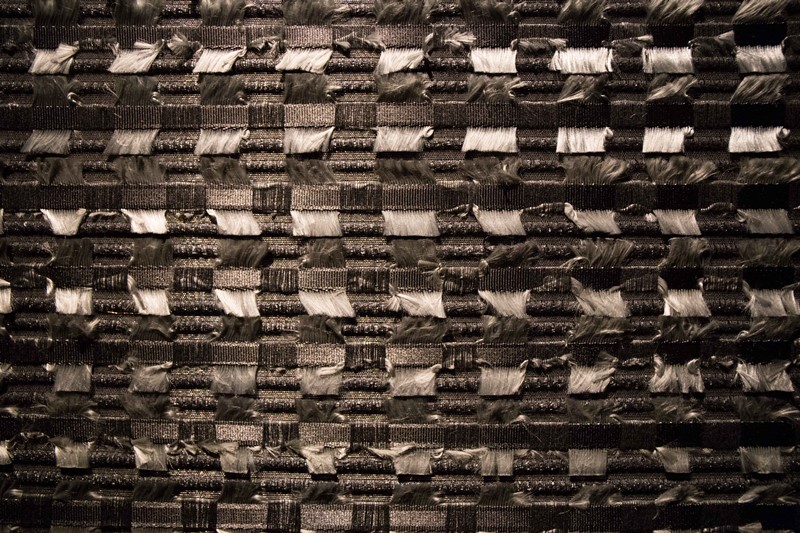
In the automotive industry, the top priority for manufacturers is quality and safety, which is reflected in the raw materials used for automobile production. When these materials and components do not meet required safety specifications and standards, they end up as waste.
With her expertise in textiles and love of craftsmanship, Thai designer Jarupatcha Achavasmit recycled seat belts, which are made from stiff, resistant fibers, into classy textiles perfect for home furnishing items. This is reminiscent of her previous work using hair from the manes and tails of horses, which is also known for its durability and versatility when converted into yarns and fabrics.
Plastic chairs made from recyclable pavilion walls
GC
Thailand
Although plastic is a major environmental concern with huge amounts of land and ocean waste, plastic use can be better managed through reuse, as it is inexpensive and recyclable.
For example, the bright pink plastic walls that were part of GC’s “Waste Side Story” Pavilion at Bangkok Design Week 2018 were mixed with discarded synthetic wood and redesigned after the event. They were then made into a set of durable chairs that are on display at the “Pure Gold – Upcycled! Upgraded! Turn Waste to Gold” exhibit, providing an opportunity for visitors to sit, take a break, and relax. This approach reflects reusing and adding value to raw materials in a more sustainable manner.
The “Pure Gold – Upcycled! Upgraded! Turn Waste to Gold” exhibition takes place from May 18 to July 22, 2018, at the Gallery room, 1st Floor (Back Building), Thailand Creative and Design Center (TCDC).
#Upcycling #UpcyclingPlasticWaste #GCUpcycling #ChemistryForBetterLiving
Feature Stories

GC and ThaiBev Provide One Million Bottles of Alcohol Gel Hand Sanitizer to Village Health Volunteers to Express Their Appreciation and Admiration
Read More
